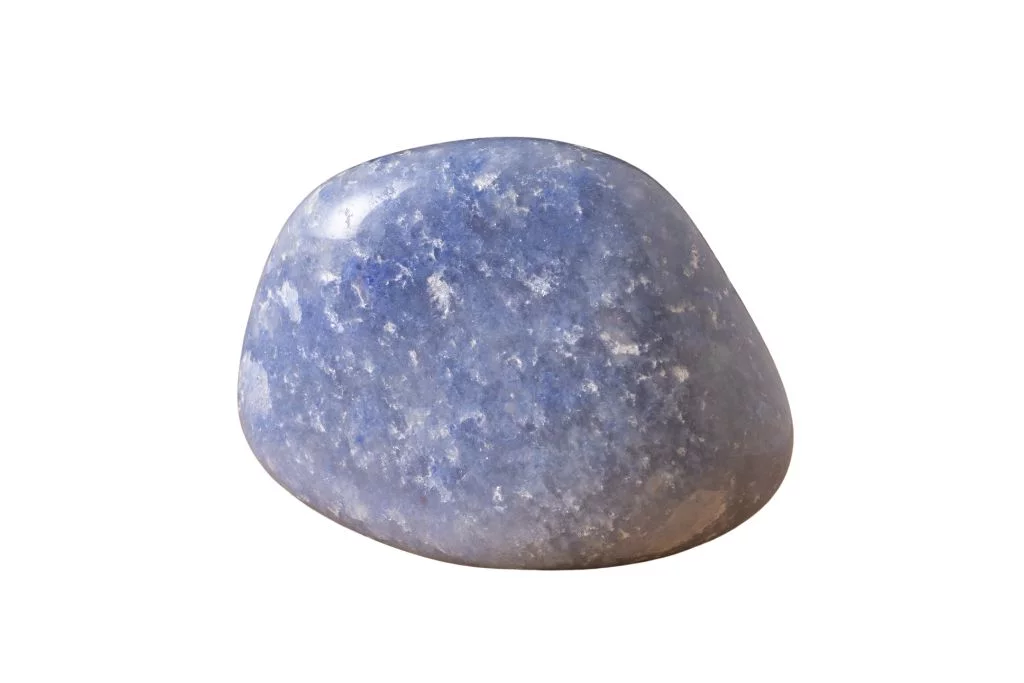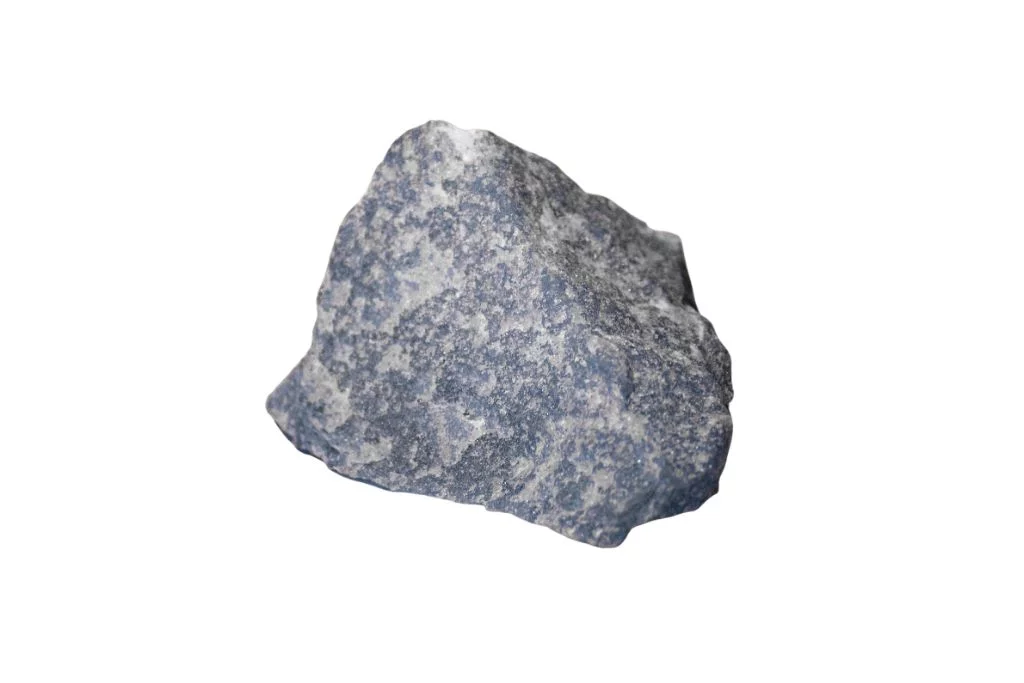Color and Appearance of Blue Quartz
Blue Quartz is a captivating and relatively rare variety of quartz that displays a range of blue hues. Its color can vary from pale sky blue to deep navy, with some specimens exhibiting a subtle grayish or greenish tint. The blue coloration is typically caused by inclusions of other minerals, such as dumortierite, tourmaline, or riebeckite, rather than being an inherent property of the quartz itself.
Crystal Structure
Like all quartz varieties, Blue Quartz has a trigonal crystal system. It forms hexagonal prisms with pyramidal terminations, although well-formed crystals are uncommon. More often, Blue Quartz is found in massive form or as part of larger rock formations. The crystal structure contributes to its durability, with a hardness of 7 on the Mohs scale, making it resistant to scratches and wear.
Notable Physical Characteristics
Blue Quartz exhibits the typical properties of quartz, including its vitreous luster and conchoidal fracture. However, its blue coloration sets it apart from more common quartz varieties. The intensity and distribution of color can vary within a single specimen, sometimes creating a mottled or streaky appearance. Additionally, some Blue Quartz may display a subtle shimmer or chatoyancy effect due to fibrous inclusions.
Unique Features
What makes Blue Quartz truly stand out is its rarity compared to other quartz varieties. Its distinctive blue color is a result of specific mineral inclusions, making each specimen unique. Some Blue Quartz may also exhibit asterism, a star-like optical effect, when cut into cabochons. This phenomenon, combined with its uncommon color, makes Blue Quartz highly sought after by collectors and jewelry enthusiasts alike.
Historical and Cultural Significance of Blue Quartz
Blue Quartz, though less common than other quartz varieties, has been valued for centuries in various cultures. Ancient civilizations, particularly in South America and parts of Asia, revered this stone for its unique coloration and believed it to be a gift from the gods. In some Native American traditions, Blue Quartz was associated with sky spirits and used in rituals to invoke clear communication with higher realms.
Metaphysical Associations
In the realm of crystal healing and metaphysics, Blue Quartz is often linked to the throat and third eye chakras. It is believed to enhance communication skills, both verbal and psychic. Many practitioners claim that this stone can help in accessing and understanding one’s intuition, promoting clarity of thought and expression. Blue Quartz is also associated with tranquility and stress relief, making it a popular choice for meditation practices.
Common Uses and Benefits
Today, Blue Quartz is widely used in jewelry making, particularly in pendants and earrings, where its subtle blue hues can complement various styles. In alternative healing practices, it is often placed on the throat or forehead during crystal layouts to promote clear communication and intuitive insights. Some people keep Blue Quartz in their workspace to foster creativity and mental clarity. Additionally, it is believed to aid in overcoming fear of public speaking and expressing oneself authentically.
Modern Applications
In recent years, Blue Quartz has gained popularity in holistic wellness circles. It is often incorporated into meditation apps and virtual healing sessions as a focus point for relaxation and spiritual growth. Some modern crystal enthusiasts use Blue Quartz in gridding practices, believing it can create a harmonious energy field in living spaces. The stone’s association with communication has also made it a favorite among social media influencers and public speakers, who use it as a talisman for clear and impactful messaging.


